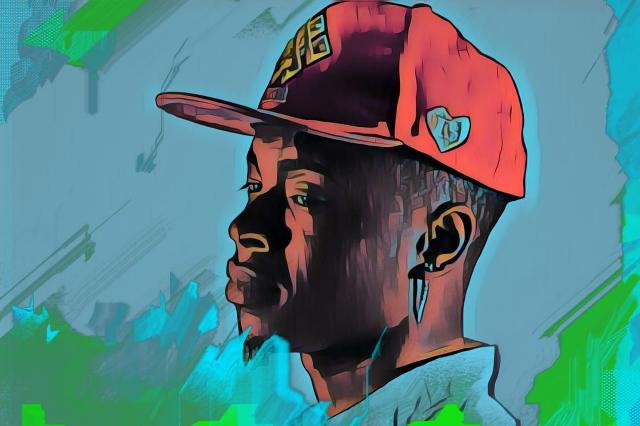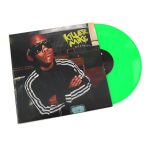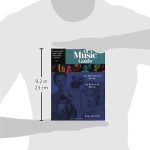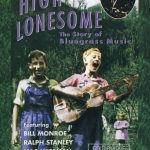Rap music encompasses various genres, including east coast, west coast, gangsta, trap, and conscious rap. In recent years, rap music has grown in popularity and has become a mainstream genre of music.
It has crossed over into other genres, such as pop and rock, and has even influenced the fashion and cultural landscape. With its roots in african american communities, rap music has become a powerful form of self-expression and storytelling. It often tackles social and political issues, and its artists use clever wordplay and rhythmic delivery to captivate audiences.
Rap music continues to evolve and diversify, with new sub-genres constantly emerging.
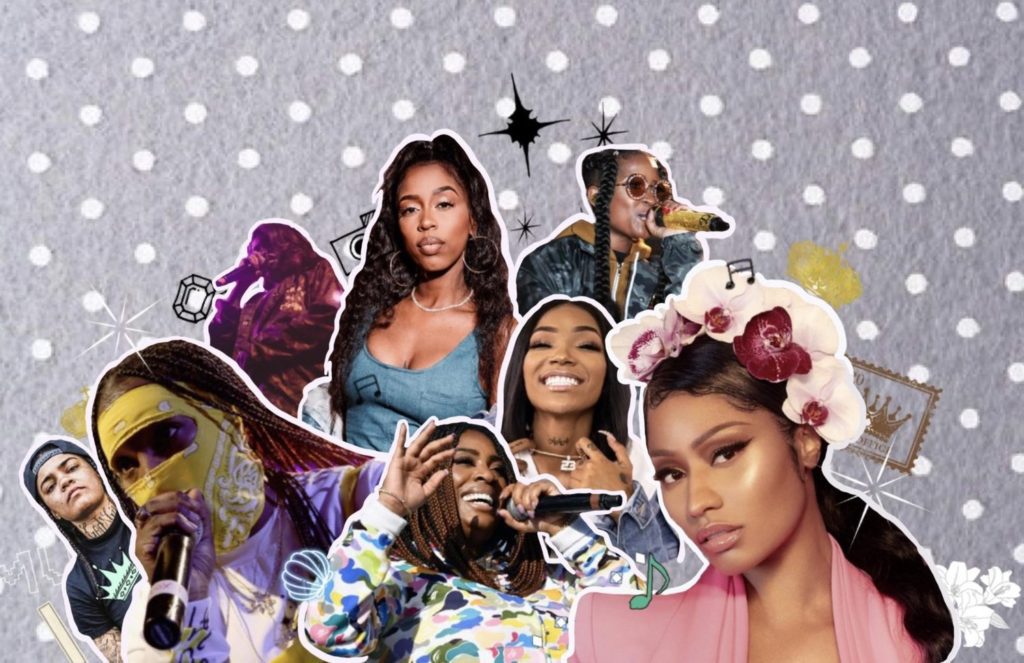
Credit: raptology.com
Introduction To Rap Music
Genres Of Rap Music
Rap music has become one of the most popular and influential genres in the music industry. It has a unique style and rhythm that sets it apart from other genres. In this section, we will explore the origins and history of rap music, as well as its cultural impact.
What Is Rap Music?
Rap music is a genre that combines rhyming lyrics with a rhythmic beat. It emerged in the 1970s in african american and latino communities in new york city. Rap music is characterized by its use of spoken-word lyrics, often addressing social and political issues.
It is typically performed over a backing track or beat, which may include samples from other songs.
Key points:
- Rap music is characterized by its rhythmic delivery of lyrics.
- It emerged in the 1970s in african american and latino communities.
- Rap music often addresses social and political issues.
- It is performed over a backing track or beat.
Origins And History Of Rap Music
Rap music has its roots in african and african american oral traditions, such as storytelling and poetic expression. It can be traced back to the griots of west africa, who were traditional storytellers and historians. In the 1970s, rap music gained popularity in new york city, with artists like dj kool herc and grandmaster flash pioneering the genre.
Over time, rap music has evolved and diversified, with various subgenres emerging, such as gangsta rap, conscious rap, and mumble rap.
Key points:
- Rap music has its roots in african and african american oral traditions.
- It emerged in new york city in the 1970s.
- Dj kool herc and grandmaster flash were early pioneers of rap music.
- Rap music has evolved into various subgenres.
Rap Music’S Cultural Impact
Rap music has had a significant cultural impact since its emergence. It has provided a platform for marginalized communities to express their experiences and perspectives. Rap music has also influenced fashion, language, and dance styles. It has served as a form of protest, addressing social injustice and challenging societal norms.
Rap music has crossed boundaries and gained global popularity, making it a powerful tool for cultural expression and storytelling.
Key points:
- Rap music has given marginalized communities a voice.
- It has influenced fashion, language, and dance styles.
- Rap music has been used to address social injustice and challenge norms.
- It has gained global popularity, becoming a powerful form of cultural expression.
Rap music is a vibrant and dynamic genre that continues to evolve and shape popular culture. From its humble beginnings in new york city to its global influence today, rap music has left an indelible mark on the music industry and society at large.
Its ability to amplify voices and provoke thought makes it a genre that is here to stay.
Remember to optimize your blog post with relevant keywords related to rap music to enhance its visibility in search engine results.
Evolution Of Rap Genres
Rap music has gone through a remarkable evolution over the years, giving birth to various sub-genres that have left an indelible mark on the music industry. From the early days of old school hip hop to the emergence of gangsta rap and conscious rap, and the subsequent rise of alternative rap, each phase has its own unique characteristics and has contributed to the overall development of the genre.
Early Rap Genres And Their Characteristics
During the early stages of rap music, two prominent genres emerged, each with its own distinctive features.
- Old school hip hop:
- Originated in the 1970s and continued into the early 1980s.
- Characterized by its upbeat rhythms and energetic delivery.
- Often featured breakbeats, which were snippets of funk or soul tracks.
- Lyrics primarily focused on partying, boasting, and showcasing the dj’s skills.
- Popular artists include grandmaster flash and the furious five, and kurtis blow.
- Golden age hip hop:
- Flourished from the mid-1980s to the mid-1990s.
- Known for its innovative sampling techniques and intricate lyricism.
- Artists placed a heavy emphasis on storytelling, social commentary, and cultural awareness.
- Sampling from various genres such as funk, soul, and jazz became more prevalent.
- Notable artists include rakim, public enemy, and a tribe called quest.
The Emergence Of Sub-Genres In Rap Music
As rap music continued to evolve, it splintered into sub-genres, each representing a distinct style and thematic focus.
- Gangsta rap:
- Emerged in the late 1980s and gained popularity in the 1990s.
- Known for its raw and gritty depiction of urban lifestyles, often exploring themes of violence, crime, and street life.
- Artists like n.w.a, tupac shakur, and the notorious b.i.g. Became emblematic of this genre.
- Gangsta rap sparked controversy for its explicit content but also served as a platform for social commentary.
- Conscious rap:
- Stood in stark contrast to the materialistic themes prevalent in other sub-genres.
- Focused on socially conscious lyrics, tackling issues like racial inequality, poverty, and political unrest.
- Artists such as common, mos def, and talib kweli used their music as a means of spreading awareness and provoking thought.
- Conscious rap aimed to uplift, educate, and inspire listeners with its thought-provoking messages.
- Alternative rap:
- Developed in the 1990s as a response to the mainstream’s increasing commercialization of rap music.
- Artists in this sub-genre pushed the boundaries of traditional rap, incorporating elements of rock, jazz, and electronic music.
- Lyrically diverse, addressing a range of topics from personal introspection to social commentary.
- Notable figures include outkast, the fugees, and kanye west, who revolutionized the genre with their innovative production and lyrics.
Rap music’s evolution and the emergence of various sub-genres have undeniably shaped the cultural landscape, giving artists the freedom to express themselves in unique ways. From the party-driven beats of old school hip hop to the socially conscious themes of conscious rap, and the experimental sounds of alternative rap, the genre continues to evolve, captivating audiences around the world.
Mainstream Rap Genres
Trap Music: A Deep Dive Into The Trap Rap Genre
If you’re a fan of rap music, chances are you’ve come across the genre known as trap. Trap music originated in the southern united states in the late 1990s and has since become one of the most popular subgenres of rap music.
With its unique beats, powerful lyrics, and distinct vocal delivery, trap has captivated millions of listeners worldwide. In this section, we will take a closer look at the origins, characteristics, influential artists, and sub-genres within trap music.
Origins And Characteristics Of Trap Music:
- Origination: Trap music emerged from the hip-hop scene in atlanta, georgia, drawing inspiration from southern hip-hop and electronic music.
- Beats: Trap music is characterized by its trap beats, which are typically mid-tempo, bass-heavy, and infused with elements of electronic music and hi-hats.
- Lyrics: The lyrics of trap music often focus on themes such as street life, drugs, money, and the struggle for survival.
- Vocal style: Trap music is known for its distinctive vocal style, which includes a combination of rapping and singing, often with autotune effects.
Influential Trap Artists And Tracks:
- T.i. : Known as the “king of the south,” t.i. Played a crucial role in popularizing trap music with his breakthrough album, “trap muzik.”
- Gucci mane: Gucci mane is considered one of the pioneers of trap music, with his gritty lyrics and unique flow. His track “lemonade” is an iconic trap anthem.
- Future: Future is known for his melodic trap sound and emotionally-charged lyrics. His hit track “mask off” gained immense popularity and became a trap music anthem.
Sub-Genres Within Trap Music:
- Drill trap: Characterized by its aggressive lyrics, dark beats, and heavy use of trap elements, drill trap originated in chicago and has gained traction worldwide.
- Cloud trap: This sub-genre combines trap elements with dreamy, atmospheric sounds, featuring artists like lil uzi vert and playboi carti.
Mumble Rap: An Exploration Of The Mumble Rap Genre
Another subgenre that has gained significant prominence in recent years is mumble rap. While it has faced its fair share of criticisms, mumble rap has undeniably made an impact on mainstream music. In this section, we will delve into the definition, characteristics, criticisms, and popular artists and songs within the mumble rap genre.
Definition And Characteristics Of Mumble Rap:
- Mumble rap is a subgenre of rap music known for its heavily autotuned vocals, mumbling delivery, and focus on catchy melodies rather than intricate lyricism.
- It is often characterized by repetitive hooks, ad-libs, and a laid-back, carefree vibe.
Criticisms and controversies surrounding mumble rap:
- Lack of lyrical depth: One of the main criticisms of mumble rap is the perceived lack of meaningful lyrics and substance in the songs.
- Mumbling delivery: Some argue that the mumbling delivery style makes it difficult to understand the lyrics, leading to a loss of the traditional art of storytelling in rap music.
Popular mumble rap artists and songs:
- Lil uzi vert: With hits like “xo tour llif3” and “money longer,” lil uzi vert has become one of the most popular mumble rap artists.
- Playboi carti: Known for his ad-lib-heavy tracks and energetic performances, playboi carti has gained a strong following among mumble rap enthusiasts with songs like “magnolia” and “wokeuplikethis”.
Drill Music: Uncovering The Drill Rap Genre
Originating from the streets of chicago, drill music has gained recognition for its raw and unfiltered portrayal of street life. In this section, we will explore the origins, evolution, association with street culture, and influential drill rap artists and tracks.
Origins And Evolution Of Drill Music:
- Drill music originated in the early 2010s in chicago’s south side, reflecting the harsh realities of life in the city’s crime-ridden neighborhoods.
- It gained popularity through various underground mixtapes and the rise of social media platforms, showcasing the gritty lyricism and aggressive beats of drill music.
Drill music’s association with street culture:
- Drill music is deeply connected to street culture and often reflects the experiences and struggles of those living in disadvantaged communities.
- It has been criticized for glorifying violence and criminal activities, but some argue that it serves as a way for artists to express their realities and shed light on social issues.
Influential drill rap artists and tracks:
- Chief keef: Known as one of the pioneers of drill music, chief keef’s tracks like “i don’t like” and “love sosa” helped popularize the genre.
- Lil durk: Lil durk has made a significant impact on the drill rap scene with tracks like “dis ain’t what u want” and “india.”
With trap, mumble rap, and drill music, the rap genre has witnessed an evolution that has captivated audiences around the world. These subgenres have reshaped the rap landscape, giving rise to new sounds, styles, and narratives. Whether you prefer the trap beats, melodic hooks, or gritty street tales, there’s no denying the enduring influence of these mainstream rap genres.
Alternative And Experimental Rap Genres
Cloud Rap: A Closer Look At The Ethereal Rap Genre
Cloud rap is an alternative and experimental subgenre of rap music that emerged in the early 2010s. It is characterized by its dreamy and atmospheric sound, incorporating elements of ambient music and lo-fi hip hop. Here’s a closer look at the origins, sound, and aesthetics of cloud rap:
- Origins:
- Cloud rap originated in southern rap scenes, particularly in cities like houston and atlanta.
- Rappers such as lil b, a$ap rocky, and clams casino played a significant role in popularizing the genre.
- Sound and aesthetics:
- The sound of cloud rap is often characterized by hazy, ethereal beats, utilizing slow tempos and reverb-soaked production.
- It emphasizes spacey and ambient textures, creating a laid-back and introspective atmosphere.
- The vocals in cloud rap are often distorted or pitched-shifted, adding to the otherworldly and dreamlike quality of the genre.
- The lyrics in cloud rap can range from introspective and melancholic to more abstract and surreal themes.
- Notable cloud rap artists and tracks:
- A$ap rocky’s “purple swag” and “l$d”
- Travis scott’s “90210” and “drugs you should try it”
- Clams casino’s “i’m god”
- Lil b’s “i’m god” and “wonton soup”
- Fusion of cloud rap with other genres:
- Cloud rap has successfully blended with various genres, including trap, electronic music, and even rock.
- The fusion of cloud rap with trap elements can be witnessed in the works of artists like playboi carti, lil uzi vert, and lil peep.
- Electronic producers such as flying lotus and shlohmo have incorporated cloud rap aesthetics into their music, creating a unique blend of genres.
Afrobeat Rap: Exploring The Fusion Of Rap And Afrobeat
Afrobeat rap is a vibrant subgenre that combines the energetic rhythms and infectious melodies of afrobeat music with the lyrical prowess of rap. Let’s take a closer look at this fusion:
- Overview of afrobeat and its influence:
- Afrobeat is a genre that originated in the 1960s in west africa, blending traditional nigerian music with jazz, highlife, and funk.
- Fela kuti, a prominent nigerian musician, is often credited as the pioneer of afrobeat.
- Afrobeat has had a significant influence on contemporary music, especially in the realms of hip hop and dancehall.
- Characteristics of afrobeat rap music:
- Afrobeat rap combines the rhythmic grooves and polyrhythms of afrobeat with rap’s lyrical flow and storytelling.
- It features infectious beats, vibrant horn sections, and dynamic percussions, creating a joyful and energetic atmosphere.
- The lyrics in afrobeat rap often address sociopolitical issues, cultural heritage, and personal experiences.
- Pioneers and popular afrobeat rap artists:
- Burna boy, a nigerian artist, has been at the forefront of blending afrobeat and rap influences in his music.
- Wizkid, davido, and rema are also notable artists who incorporate afrobeat elements into their rap-infused tracks.
- Outside of africa, artists like drake, jidenna, and goldlink have embraced afrobeat influences in their rap music, collaborating with african artists and incorporating afrobeat rhythms into their tracks.
Horrorcore: Delving Into The Dark Side Of Rap Music
Horrorcore is a subgenre of rap music characterized by its dark and macabre themes, often exploring horror movie-inspired narratives. Let’s delve into the world of horrorcore:
- Definition and origins of horrorcore:
- Horrorcore, also known as horror rap, emerged in the 1980s as a subgenre of rap, influenced by horror movies, violent imagery, and gothic aesthetics.
- It gained popularity through artists like esham, gravediggaz, and insane clown posse.
- Themes and lyrical content in horrorcore rap:
- Horrorcore often delves into violent and grotesque themes, including murder, gore, and supernatural elements.
- The lyrics can be graphic and explicit, aiming to shock and provoke a reaction from the audience.
- Horrorcore artists use storytelling techniques to create vivid and chilling narratives, often blurring the lines between reality and fantasy.
- Impact and notable horrorcore rap artists:
- Despite its controversial nature, horrorcore has amassed a dedicated fanbase and influenced various artists in the alternative rap scene.
- Artists like tech n9ne, ghostemane, and $uicideboy$ have incorporated horrorcore elements into their music, pushing the boundaries of the genre.
- The aesthetic and lyrical style of horrorcore has also found its way into other genres, such as trap metal and emo rap, expanding its influence even further.
Regional And International Rap Genres
West Coast Hip Hop: A Guide To The Distinct West Coast Sound
The west coast hip hop scene has been a major force in shaping the rap genre. With its unique sound and influential artists, west coast hip hop has carved its own path in the world of music. Let’s take a closer look at the history, development, and iconic figures of the west coast sound.
History And Development Of West Coast Hip Hop
- Born out of the gangsta rap movement of the 1980s and 1990s, west coast hip hop originated in the streets of los angeles, california.
- The genre gained prominence with the success of groups like n.w.a (niggaz wit attitudes) and their groundbreaking album, “straight outta compton.”
- In the 2000s, west coast hip hop underwent a transformation with the emergence of artists like kendrick lamar and schoolboy q, who brought a fresh perspective to the scene.
G-Funk And Its Influence On The Genre
- G-funk, a subgenre of west coast hip hop, introduced a smooth, laid-back sound that became synonymous with the west coast style.
- Popularized by artists like dr. dre, snoop dogg, and warren g, g-funk incorporated elements of funk, soul, and r&b into rap music.
- The deep, groovy basslines and melodic synths characteristic of g-funk had a lasting impact on the genre, influencing both west coast and global rap music.
Iconic West Coast Hip Hop Artists And Albums
- Dr. dre’s debut solo album, “the chronic,” is widely regarded as a classic west coast hip hop record, combining g-funk elements with socially conscious lyrics.
- Snoop dogg’s “doggystyle” became an instant hit and propelled him to superstardom, showcasing his smooth flow and witty wordplay.
- Tupac shakur, although not exclusively a west coast artist, made a significant impact on the genre with his poetic storytelling and raw emotion in albums such as “all eyez on me.”
Uk Grime: Unraveling The Gritty Sound Of British Rap
The uk grime scene has risen to prominence in recent years, bringing a unique and gritty sound to the rap genre. Let’s delve into the evolution, characteristics, and notable artists of uk grime.
Evolution And Growth Of Uk Grime
- Stemming from the uk garage and jungle scenes of the 1990s, grime emerged as a raw and energetic form of rap music in the early 2000s.
- The genre gained traction through pirate radio stations and underground rave culture, capturing the essence of urban life in britain.
- Over the years, grime has grown in popularity, reaching new audiences globally and establishing itself as a distinctive subgenre of rap.
Characteristics Of Grime Music And Lyrical Style
- Grime music is characterized by its fast-paced, aggressive beats, often featuring heavy use of electronic and bass elements.
- Lyrically, grime artists express their experiences and social observations through rapid-fire flows and sharp wordplay, reflecting the realities of urban life in the uk.
- Grime is renowned for its gritty, raw energy and unapologetic authenticity, making it a powerful voice for the british rap scene.
Prominent Uk Grime Artists And Tracks
- Stormzy, one of the biggest names in uk grime, gained international recognition with his album “gang signs & prayer,” which showcased his versatile style and politically charged lyrics.
- Skepta, another influential figure in the grime scene, released the critically acclaimed album “konnichiwa,” blending grime with international influences and earning him the prestigious mercury prize.
- “shutdown” by skepta and “big for your boots” by stormzy are prime examples of powerful grime tracks that have taken the genre to new heights.
K-Pop Rap: The Fusion Of Rap And Korean Pop Music
K-pop, the global phenomenon originating from south korea, has incorporated rap elements into its music, creating dynamic and captivating tracks. Let’s explore the rise of rap in k-pop, the styles and influences it encompasses, and some notable artists in this fusion genre.
Rise Of Rap In K-Pop Groups
- In recent years, k-pop groups have been incorporating rap sections into their songs, adding a new layer of diversity and excitement.
- Rap in k-pop allows for different members to showcase their individual talents and adds a hip-hop flavor to the predominantly pop-oriented music.
- Popular k-pop groups like bts, blackpink, and exo have successfully integrated rap into their music, appealing to a wider global audience.
Styles And Influences Of K-Pop Rap
- K-pop rap draws inspiration from various rap styles, including trap, boom bap, and r&b-infused flows.
- The genre seamlessly blends rap with catchy pop melodies and meticulously choreographed performances, creating an immersive musical experience.
- Western rap influences, such as those from american and british hip hop, have played a significant role in shaping k-pop rap’s style and lyrical content.
Notable K-Pop Rap Artists And Collaborations
- Rm from bts has garnered attention for his impressive rap skills and introspective lyricism, contributing to the group’s success in the global market.
- Cl, formerly of the group 2ne1, has made waves as a solo artist with her fierce rap verses and dynamic stage presence.
- Collaborations between k-pop and western rap artists, such as agust d’s collaboration with max on “blueberry eyes,” highlight the cross-cultural appeal and versatility of k-pop rap.
Frequently Asked Questions Of Genres Of Rap Music
What Are The Different Genres Of Rap Music?
There are several genres of rap music, including trap, conscious rap, gangsta rap, alternative rap, and mumble rap. Each genre has its own distinct style, lyrical content, and cultural influences.
What Is Trap Music In Rap?
Trap music is a subgenre of rap that originated in the southern united states. It is characterized by its use of heavy bass, catchy melodies, and lyrics that often focus on topics like crime, drug addiction, and street life.
What Is Conscious Rap?
Conscious rap is a genre of rap that focuses on social and political issues. It often addresses topics such as racism, inequality, poverty, and the struggles faced by marginalized communities. Conscious rap artists aim to raise awareness and provoke thought through their music.
Conclusion
Rap music, with its diverse range of genres and subgenres, continues to captivate listeners and evolve with the times. From the intense and gritty sounds of gangsta rap to the smooth and melodic vibes of mumble rap, there is truly something for everyone within the rap genre.
Whether you prefer the socially conscious messages of conscious rap or the high-energy beats of trap music, rap has proven itself to be a versatile and constantly evolving genre. One of the most fascinating aspects of rap music is its ability to explore and express the experiences and perspectives of different cultures and communities.
From the powerful storytelling of narrative rap to the infectious rhythms of afrobeat-inspired rap, this genre has become a powerful tool for artists to share their stories and shed light on important social issues. It’s also worth mentioning the influence of technology and the internet on rap music, allowing for the rise of viral hits and the emergence of new subgenres like soundcloud rap.
Ultimately, the genres of rap music serve as a testament to the creativity and innovation within the industry. As rap continues to push boundaries and break new ground, it is exciting to see how the genre will further evolve and captivate audiences in the future.
Whether you are a long-time fan or new to the genre, there is no denying the impact and influence of rap music on popular culture. So, turn up the volume, embrace the diversity, and enjoy the amazing world of rap music!

